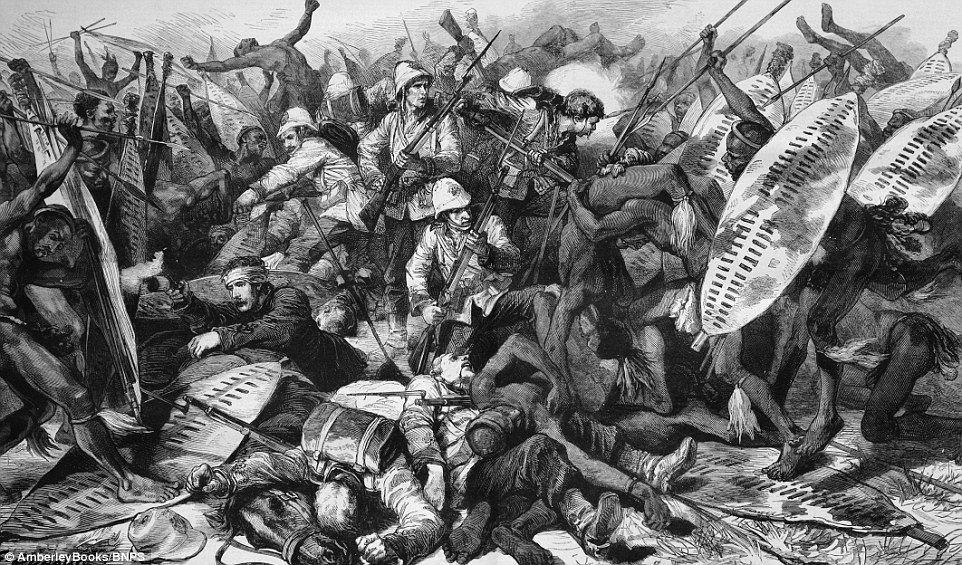The Zulu War – Battle of Isandlwana
The British invasion of Zululand began on 11th January 1879, with the British objective being an eventual federation in Africa. The conflict began because the Zulu kingdom presented an obstacle to British imperial ambitions in southern Africa.
The battle of Isandlwana erupted on the 22nd January 1879; 11 days after the British started their invasion. 20,000 Zulu warriors attacked 1,800 British, colonial and native troops and 400 civilians. The Zulus, overwhelmed the British, killing over 1,300 troops, while around 1,000 Zulu warriors were killed.

Later, on 22nd January 1879, at Rorkes Drift, on the Natal border with Zululand, a small British garrison of 150 soldiers, mostly from the 24th Regiment of Foot – many of them sick and wounded – fought for over 12 hours to repel repeated attacks by up to 4,000 Zulu warriors. After fighting day and night the Zulus eventually retreated after 351 of their men died and 500 were wounded.
Queen Victoria’s government awarded 11 Victoria Crosses to individuals in recognition of their ‘gallantry in the presence of the enemy’. 7 were awarded to soldiers of the 24th Regiment of Foot.
The Battle of Rorkes Drift was immortalised in the 1964 film Zulu.
The Battle of Ulundi on the 4th July 1879 effectively ended the Zulu-Anglo war, with the defeat of the Zulu forces by the British when over 5,200 British and African soldiers razed the capital of Zululand after defeating the main Zulu army.
The war ultimately ended with a British victory and Zulu independence.
Private Harry Johnson, of the 24th Regiment of Foot (2nd Warwickshire – later called the South Wales Borderers), who died at the Battle of Isandlwana is mentioned on the family grave in the St Peter & St Pauls cemetery, Appledore. The grave marker recognises five Johnson family members, including Harry and Anne Johnson, although they do not appear in the Graveyard register (shown here).
Unfortunately the dead at Isandlwana were not repatriated to the UK. They were left where they fell and the British only went back many months afterwards. They found bones scattered and unrecognisable on the field. Eventually they were collected and buried in mass graves.
Clearly though Harry’s family wished him to be remembered, so his name was entered onto the family grave marker.
The headstone became damaged over time, with the cross having become detached from the base. The Appledore Local History Society have organised and paid for the restoration as shown in the two images below.


Click here to view the page on The Zulu War by the National Army Museum and a BBC report on the defeat by living relatives of the Zulu warriors.
The Battle of Rorkes Drift was immortalised in the 1964 film Zulu.
